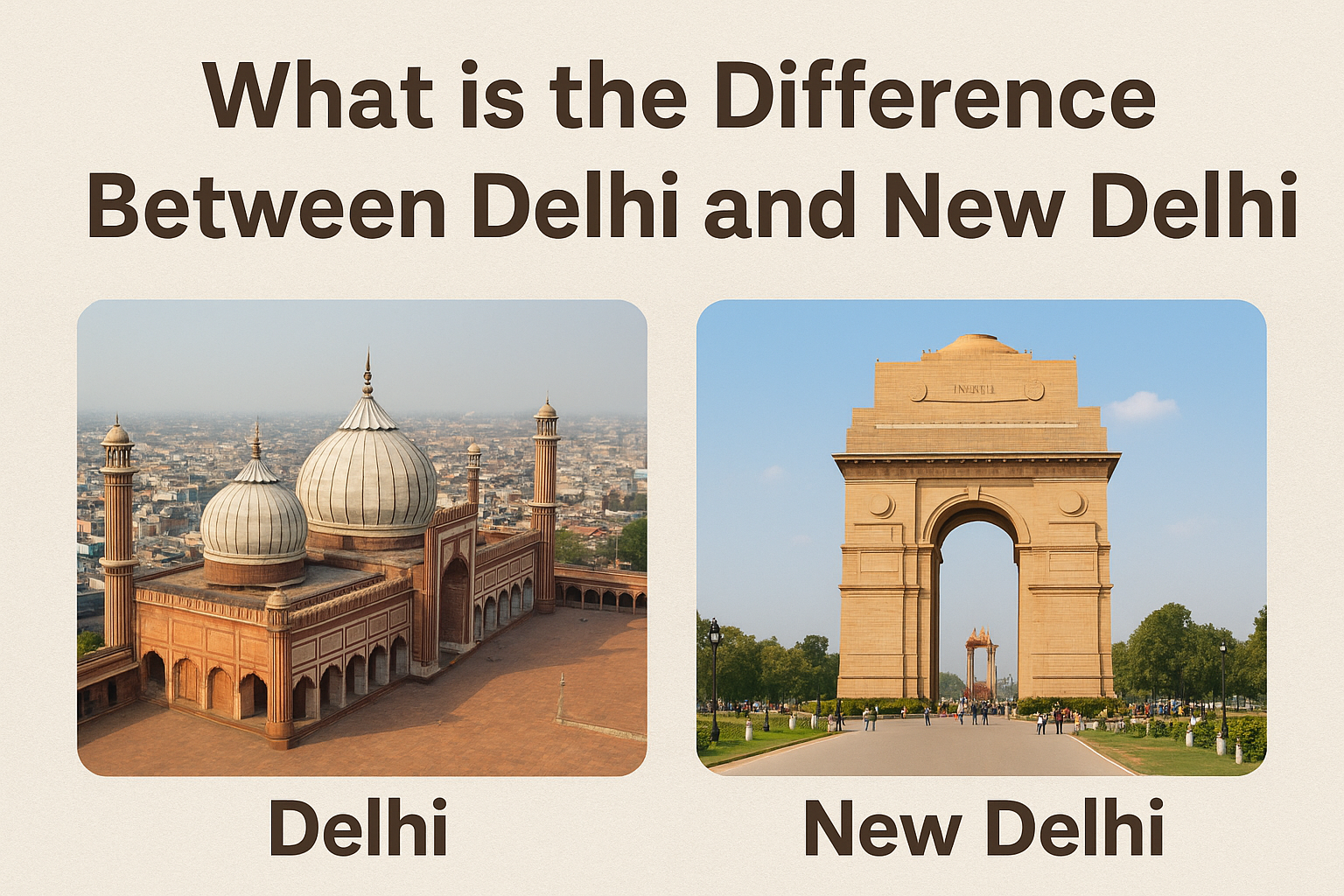“If you’re going to India, are you visiting Delhi or New Delhi?” This question often causes confusion. Are they the same place? Is one a part of the other?
The short answer is: New Delhi is a district within the larger capital territory of Delhi.
Think of it like this: New York City is made up of boroughs like Manhattan, Brooklyn, and Queens. Similarly, the National Capital Territory of Delhi (often just called “Delhi”) is made up of several districts, and New Delhi is one of them—albeit the most important one.
Let’s break down the key differences.
The Simple Analogy: The Bowl of Fruit
Imagine a bowl of fruit labeled “Delhi.” This bowl contains apples, oranges, bananas, and grapes.
- The entire bowl is the National Capital Territory of Delhi.
- New Delhi is the shiny, red apple in that bowl.
- Other districts like Old Delhi, Dwarka, Karol Bagh, and Rohini are the oranges, bananas, and grapes.
So, when you say you’re “in New Delhi,” you are specifically in that central administrative area. When you say you’re “in Delhi,” you could be anywhere in the massive capital territory.
Delhi vs. New Delhi: A Quick Comparison Table
| Feature | Delhi | New Delhi |
|---|---|---|
| Definition | A Union Territory and the official National Capital Territory of India. | A specific urban district within the territory of Delhi. |
| Status | A city-state with its own government (like a state). | The capital of India and a constituent area of Delhi. |
| Area | Massive: ~1,484 sq km | Relatively small: ~42.7 sq km |
| Governed by | Government of Delhi (with a Chief Minister) and the Central Government. | Primarily the New Delhi Municipal Council (NDMC), under the central government. |
| Character | A vast, sprawling metropolis with ancient history, modern suburbs, and everything in between. | A planned, spacious area with wide roads, grand government buildings, and diplomatic enclaves. |
Delhi: The Ancient & Expansive Metropolis
- What it is: Delhi is the umbrella term for the entire capital region. It has a history that stretches back millennia, with evidence of cities existing here since at least the 6th century BCE.
- Includes: It encompasses not just New Delhi, but also the historic Old Delhi (Shahjahanabad), and modern suburbs like Dwarka, Rohini, Pitampura,
- The Feel: Delhi is chaotic, vibrant, and incredibly diverse. It’s a patchwork of ancient monuments, bustling markets, residential neighborhoods, and commercial hubs. When someone says they live in “Delhi,” they could be referring to any of these areas.
New Delhi: The Planned Imperial Capital
- What it is: New Delhi is a specific, designed city within Delhi. It was built by the British in the early 20th century to serve as the new capital of British India, officially inaugurated in 1931.
- Designed by: Architects Sir Edwin Lutyens and Herbert Baker.
- The Feel: New Delhi is characterized by its wide, tree-lined avenues (like Rajpath, now Kartavya Path), grand government buildings (Rashtrapati Bhavan, Parliament House), spacious roundabouts, and the diplomatic area (Chanakyapuri). It feels more organized and less congested than other parts of Delhi.
Key Differences in a Nutshell
1. Historical Difference
- Delhi: Has been the site of seven ancient cities, including Indraprastha (from the Mahabharata), Siri, Tughlaqabad, and Shahjahanabad (Old Delhi).
- New Delhi: Has a modern history, officially created between 1911-1931 to replace Kolkata (Calcutta) as the capital.
2. Geographical & Architectural Difference
- Delhi: Encompasses everything from the narrow, winding lanes of Chandni Chowk in Old Delhi to the high-rise apartments of Saket.
- New Delhi: Defined by the Lutyens’ Delhi architecture—low-rise, sprawling bungalows set in large compounds, and majestic sandstone government buildings.
3. Administrative Difference
- Delhi: Has its own elected legislature and Chief Minister who governs most of the territory.
- New Delhi: Is administered by the New Delhi Municipal Council (NDMC), which falls more directly under the central government’s control.
Practical Implications for a Visitor
So, why does this matter to you?
- Your Flight Ticket: You will likely fly into Indira Gandhi International Airport (DEL), which is located in Delhi, not New Delhi.
- Your Hotel Location: If your hotel is in Connaught Place, near India Gate, or in Chanakyapuri, you are staying in New Delhi. If it’s in Aerocity, Paharganj, or Dwarka, you are in Delhi.
- Sightseeing: When you visit the Red Fort and Jama Masjid, you are in Old Delhi. When you visit India Gate and Rashtrapati Bhavan, you are in New Delhi.
Conclusion
In everyday conversation, people use “Delhi” to refer to the entire metropolis, and that’s perfectly acceptable. But now you know the secret: New Delhi is the official capital district nestled within the vast, historic, and vibrant capital territory of Delhi.
It’s the difference between visiting a single, grand building and exploring the entire, sprawling city it resides in.




